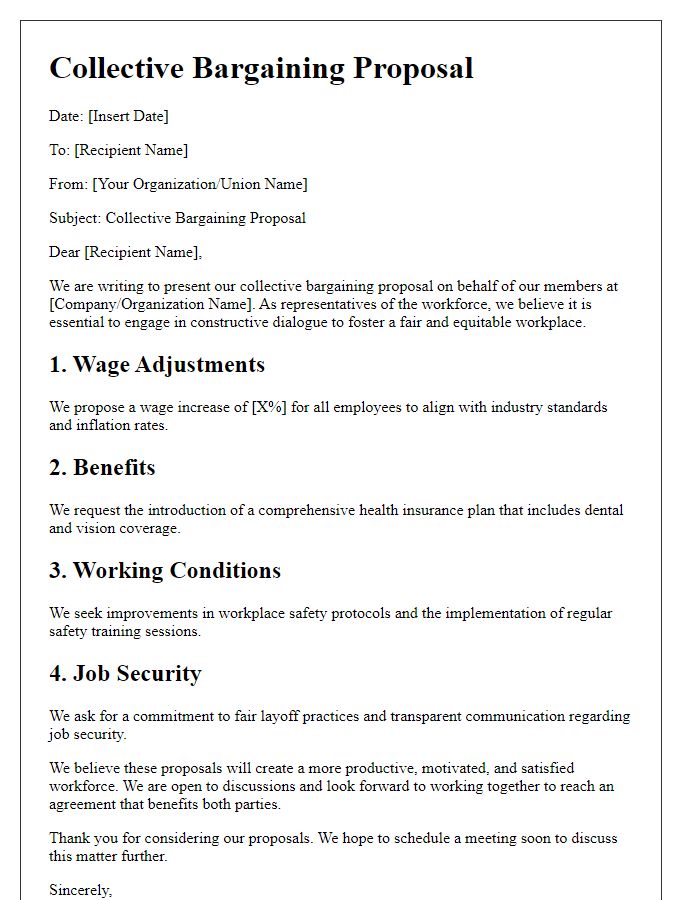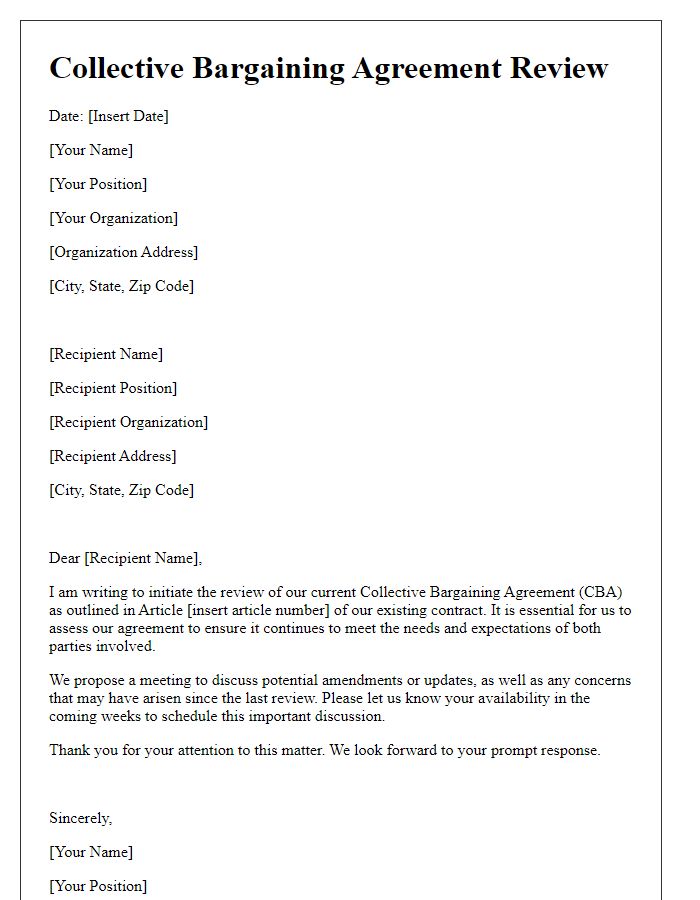Welcome to our engaging exploration of the collective bargaining agreement process! In today's constantly evolving workplace landscape, understanding the nuances of these agreements is more important than ever. From setting fair wages to outlining employee rights, the impact of collective bargaining continues to shape our work environments. So, if you're curious about how these critical agreements are formed and why they matter, let's dive in and uncover all the essential details!

Clear Objectives and Scope
In the collective bargaining context, clear objectives and scope are critical for establishing a successful agreement between parties, such as employers and employee representatives, like unions. Objectives encompass specific goals related to wages, benefits, working conditions, and job security that both sides aim to achieve, reflecting the interests and needs of the workforce, such as maintaining fair compensation in line with industry standards. The scope defines the range of issues to be negotiated, including hours of work, health insurance coverage, and retirement plans, which should be explicitly stated to prevent misunderstandings. Effective communication during this process, while considering the context of legal frameworks and historical labor relations, can foster a collaborative environment essential for reaching a mutually beneficial agreement in facilities like manufacturing plants or service industries.
Key Terms and Definitions
The collective bargaining agreement, often abbreviated as CBA, serves as a crucial framework governing the relationship between unions and employers in various sectors. Key terms include "bargaining unit," referring to a group of employees represented by a union for collective bargaining, typically defined by their job classifications (e.g., teachers, nurses) and workplace location (public school districts, hospitals). "Negotiation" denotes the process where union representatives and employer officials engage in discussions to reach mutually acceptable terms on wages, working conditions, and benefits, often taking place over several sessions in locations like union halls or corporate offices. "Grievance procedure" outlines the steps employees can take if issues arise regarding the agreement, providing a structured mechanism for addressing disputes within defined timelines. "Ratification" is the formal approval process by which union members vote on the negotiated agreement, often requiring a supermajority (more than 50%) to become binding. "Strike" refers to a work stoppage initiated by employees to exert pressure during negotiations, with historical examples evident in significant labor movements across industries such as manufacturing and education. Understanding these key terms is essential for employees, union leaders, and management to navigate the complexities of labor relations effectively.
Negotiation Procedures and Schedules
Effective negotiation procedures and schedules play a pivotal role in collective bargaining agreements, particularly in sectors like education, healthcare, and manufacturing. Typically, these negotiations commence with establishing a calendar that outlines key dates and times for discussions, often spanning several months. Stakeholders, including union representatives and management teams, meet regularly to discuss issues such as wage adjustments, benefits packages, and working conditions. For example, a mutually agreed-upon schedule might designate certain weeks for proposal exchanges and others for counteroffers. This structured approach fosters open communication and allows all parties to prepare adequately, resulting in a more efficient negotiation process. Ultimately, these procedures aim to achieve a fair and comprehensive agreement that respects the rights and needs of both employees and employers.
Rights and Responsibilities of Parties
In a collective bargaining agreement, addressed parties such as union representatives and management must understand their rights and responsibilities concerning workplace standards and employee welfare. Negotiated terms define union rights, including the ability to represent workers effectively and engaging in good-faith negotiations in accordance with the National Labor Relations Act. Responsibilities include adhering to agreed-upon contractual obligations and maintaining workplace safety regulations set forth by the Occupational Safety and Health Administration. Furthermore, management retains the right to operate the business efficiently while ensuring compliance with labor laws, such as the Fair Labor Standards Act, thus maintaining employee wages and working hours within legal parameters. Both parties must engage in ongoing communication to foster a collaborative work environment, addressing grievances or disputes according to established procedures, thereby upholding labor peace.
Dispute Resolution Mechanism
Dispute resolution mechanisms in collective bargaining agreements serve as essential frameworks to address conflicts between employers and employees. A well-structured mechanism often includes steps such as negotiation, mediation, and arbitration. In these cases, negotiation involves direct discussions between representatives from both parties, seeking to find common ground. If unresolved, mediation serves as a voluntary process where a neutral third-party mediator, often from organizations like the American Arbitration Association, assists in reaching a consensus. If mediation fails, arbitration is the final step, wherein an arbitrator examines evidence presented by both sides and makes a binding decision. Effective dispute resolution mechanisms can significantly reduce workplace tensions and foster a more collaborative environment, thereby enhancing overall productivity and morale.













Comments